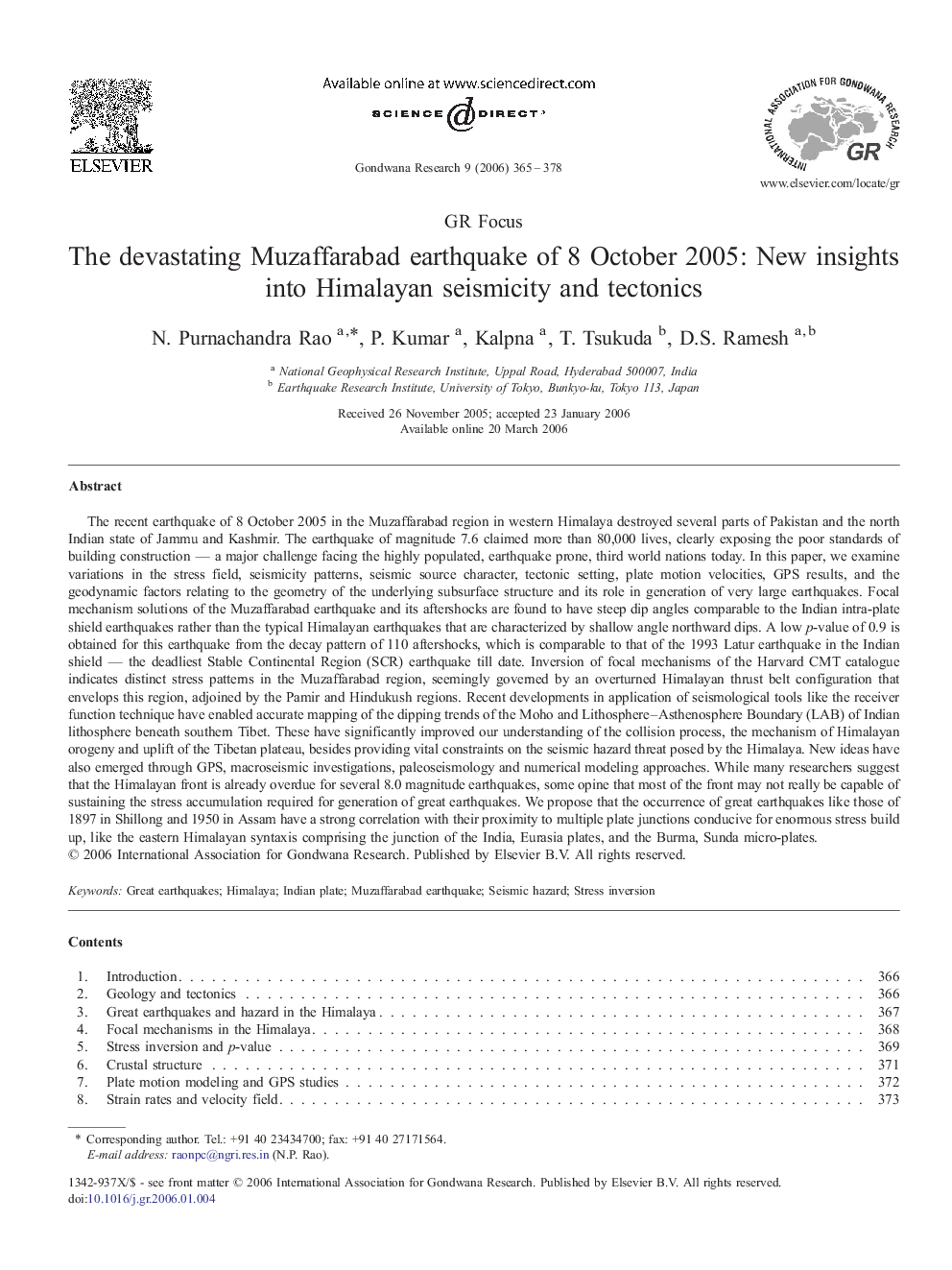| کد مقاله | کد نشریه | سال انتشار | مقاله انگلیسی | نسخه تمام متن |
|---|---|---|---|---|
| 4728087 | 1356420 | 2006 | 14 صفحه PDF | دانلود رایگان |

The recent earthquake of 8 October 2005 in the Muzaffarabad region in western Himalaya destroyed several parts of Pakistan and the north Indian state of Jammu and Kashmir. The earthquake of magnitude 7.6 claimed more than 80,000 lives, clearly exposing the poor standards of building construction — a major challenge facing the highly populated, earthquake prone, third world nations today. In this paper, we examine variations in the stress field, seismicity patterns, seismic source character, tectonic setting, plate motion velocities, GPS results, and the geodynamic factors relating to the geometry of the underlying subsurface structure and its role in generation of very large earthquakes. Focal mechanism solutions of the Muzaffarabad earthquake and its aftershocks are found to have steep dip angles comparable to the Indian intra-plate shield earthquakes rather than the typical Himalayan earthquakes that are characterized by shallow angle northward dips. A low p-value of 0.9 is obtained for this earthquake from the decay pattern of 110 aftershocks, which is comparable to that of the 1993 Latur earthquake in the Indian shield — the deadliest Stable Continental Region (SCR) earthquake till date. Inversion of focal mechanisms of the Harvard CMT catalogue indicates distinct stress patterns in the Muzaffarabad region, seemingly governed by an overturned Himalayan thrust belt configuration that envelops this region, adjoined by the Pamir and Hindukush regions. Recent developments in application of seismological tools like the receiver function technique have enabled accurate mapping of the dipping trends of the Moho and Lithosphere–Asthenosphere Boundary (LAB) of Indian lithosphere beneath southern Tibet. These have significantly improved our understanding of the collision process, the mechanism of Himalayan orogeny and uplift of the Tibetan plateau, besides providing vital constraints on the seismic hazard threat posed by the Himalaya. New ideas have also emerged through GPS, macroseismic investigations, paleoseismology and numerical modeling approaches. While many researchers suggest that the Himalayan front is already overdue for several 8.0 magnitude earthquakes, some opine that most of the front may not really be capable of sustaining the stress accumulation required for generation of great earthquakes. We propose that the occurrence of great earthquakes like those of 1897 in Shillong and 1950 in Assam have a strong correlation with their proximity to multiple plate junctions conducive for enormous stress build up, like the eastern Himalayan syntaxis comprising the junction of the India, Eurasia plates, and the Burma, Sunda micro-plates.
Journal: Gondwana Research - Volume 9, Issue 4, June 2006, Pages 365–378